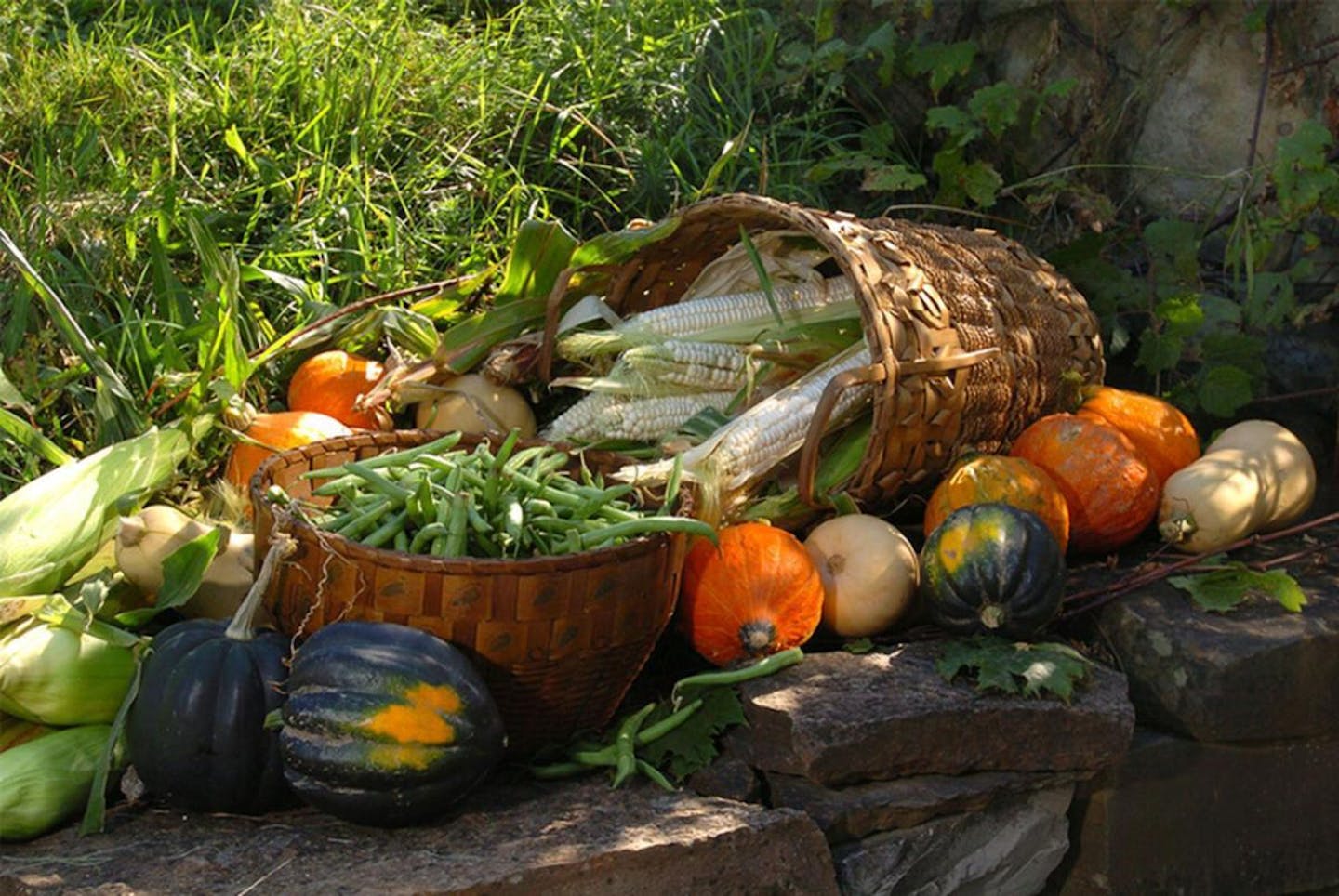Three sisters gardens
When early colonists observed Native American planting techniques, they noticed three crops often planted side-by-side: corn, beans, and squash. To European eyes, these mixed-up gardens looked haphazard, but it turns out Iroquois, Cherokee, and other Native American gardeners understood something the new settlers didn’t. When planted together, these seeds help each other grow. And, once harvested, each crop is easy-to-store, prepare multiple ways, and can last through the winter.
Companion planting corn, beans, and squash is a practice now known as “Three Sisters Gardening,” and draws upon centuries of Native American agricultural traditions and expertise. The crops compliment each other visually, as well as nutritionally in two ways: one, in the soil — forming a mutualistic symbiotic relationship with each other — and two, on the plate, for the human body.
The tall stalks of corn provide height for the beans to climb so that they are not over-taken by sprawling squash vines. Meanwhile, beans stabilize the corn during heavy winds, and provide nitrogen to fertilize the soil. Beans host rhizobia on their roots that can take nitrogen, a much needed plant nutrient, from the air and convert it into forms that can then be absorbed by other plant roots. Plants with this ability are known as “nitrogen fixers.” Finally, the large leaves of squash plants shade the ground, helping to retain soil moisture and prevent weeds.
Culinarily, a diet of corn, beans, and squash is nutritionally complete and balanced. Beans are rich in protein and have amino acids that corn lacks. Yet, corn provides carbohydrates, and squash provides vitamins and minerals that neither corn or beans do.
The term "three sisters" originated with the Haudenosaunee, also known as the Iroquois. In the Haudenasaunee planting method, all three types of seeds are planted together in the same elevated mound, a method that assists with drainage and avoids water logging of the plant roots.
In dry areas, however, the crops are often planted in separate fields with wide spacing to maximize limited water.
Regardless of method, each individual plant needs enough space around it to thrive, and a garden needs enough of each type of crop to facilitate pollination. Since beans are self-pollinating, even just one plant will suffice. Squash require insects to pollinate the flowers, so multiple plants growing at the same time will help attract sufficient pollinators. Corn is both wind-pollinated and capable of self-pollinating, and all methods recommend at least 10-20 corn plants to increase yield. Various Three Sisters layouts, including traditional Iroquois mounds, and newer grids adapted for different climates are readily available online and in gardening books.
Since all three crops can be dried and used for food year round, they provided much-needed sustenance for Native American gardeners during harsh winters. Though such a consideration is less important in modern times than it was three hundred years ago, it may become relevant again with the recent surge in personal gardening for food security and sovereignty.

.png?auto=compress%2Cformat&w=200)

